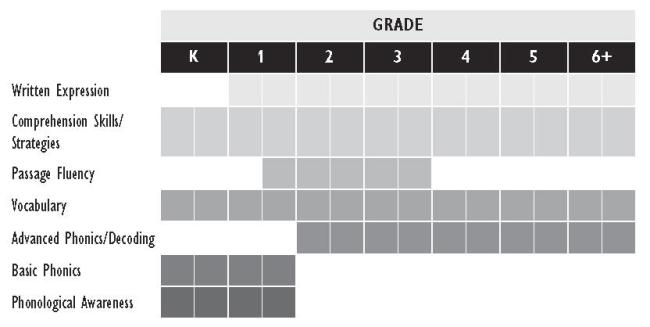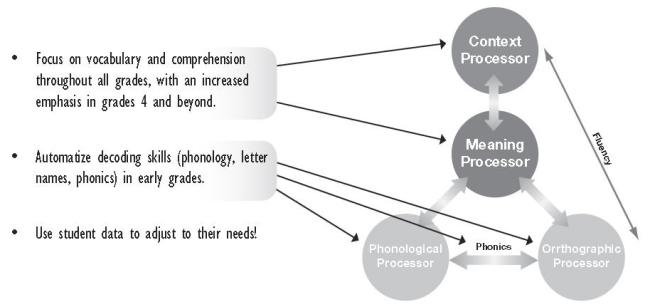At the pre-alphabetic stage, alphabet knowledge, phonological awareness, and language development deserve emphasis. In the early alphabetic and later alphabetic stages, phonological awareness and phonics, word recognition, and spelling should receive emphasis with daily practice reading simple, decodable books. Vocabulary and comprehension are taught from the beginning, with an early emphasis on reading aloud until children can read “real” books for themselves. Reading with fluency, expanding vocabulary, and deciphering longer words merit emphasis in second grade. Advanced phonics, including the study of meaningful word parts, should continue throughout elementary school.
Reading Instruction Components Typically Emphasized at Each Grade Level

As children gain comfort and skill with written language, more instructional time will be devoted to comprehension at the word, sentence, and whole-text levels. Programs should promote wide reading in a variety of texts and thorough discussions of text meanings. Ultimately, the best readers are those who read the most and who learn to question deeply as they read. Written responses to reading promote that kind of deep reflection.
Finally, it is the interactions or interrelationships among the essential components that will receive the most attention in LETRS. Like any well-designed machine, the reading brain works best when the right parts are engaged in the right order and at the right speeds to accomplish specific jobs.
Teaching Tips

Moats, L, & Tolman, C (2009). Excerpted from Language Essentials for Teachers of Reading and Spelling (LETRS): The Challenge of Learning to Read (Module 1). Boston: Sopris West.
Learn more about Language Essentials for Teachers of Reading and Spelling (LETRS) .
